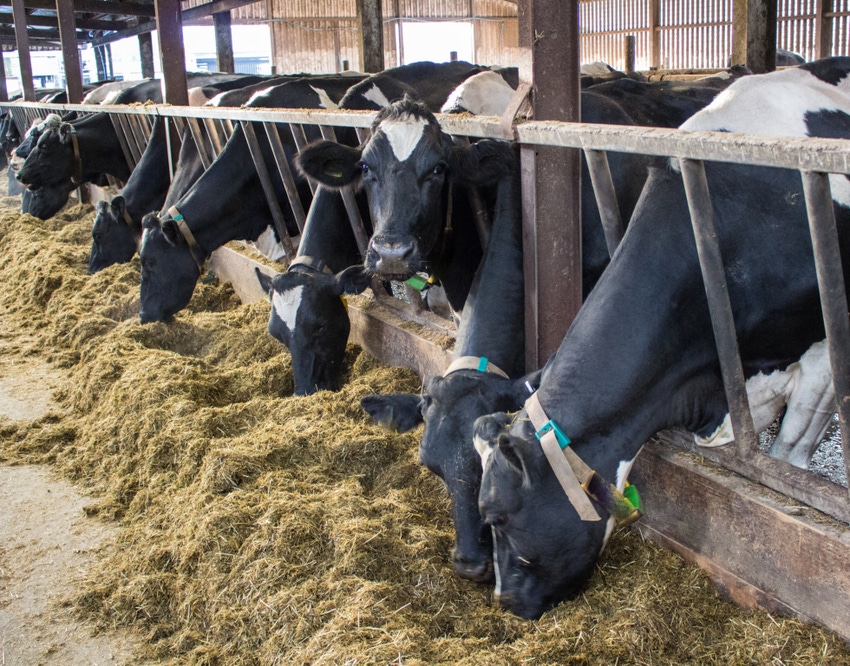Adding molasses-based liquid feed to high-straw dry cow diet may improve consistency in nutrients consumed during transition period.

It has been said that in animal nutrition, nutritionists deal with three types of rations: the one formulated, the one prepared and the one the animal actually consumes.
University of Guelph researchers C.D. Havekes, T.F. Duffield, A.J. Carpenter and T.J. DeVries recently reported on a study that determined the effects of adding a molasses-based liquid feed to a high-straw dry cow diet on the intake, behavior, health and performance of dairy cows across the transition period.
Havekes et al. enrolled into the study 40 Holstein cows entering their second lactation or greater at dry-off — approximately 45 days before expected calving — and assigned the cows to one of two treatments: (1) a high-straw dry cow total mixed ration (TMR) with no molasses, containing 10.7% crude protein (CP) and 1.45 Mcal/kg of net energy for lactation (NEL), or (2) the ration supplemented with 1 kg per cow daily of molasses-based liquid feed, containing 11.2% CP and 1.49 Mcal/kg of NEL.
At calving all cows were fed the same lactation TMR containing 14.9% CP and 1.68 Mcal/kg of NEL and were followed for 28 days, the researchers said.
Havekes et al. reported that during the dry period, cows fed the liquid feed diet had greater dry matter intake (15.3 kg versus 13.4 kg per day) and tended to have a shorter interval between meals (192.8 minutes versus 216.5 minutes) and more frequent meals (6.3 versus 5.6 meals per day) while consuming their feed faster (0.09 kg versus 0.08 kg of dry matter per minute) compared with cows fed the control diet without molasses.
Regardless of treatment, the researchers said cows sorted against the longest ration particles (greater than 19 mm), with cows fed the control diet sorting more against these. Cows fed the control diet did not sort for or against short particles (between 4 mm and 8 mm), while cows fed the liquid feed diet did tend to sort against the short particles.
Post-calving, cows fed the liquid feed diet did not sort for long particles, but cows fed the control diet continued to sort against these, Havekes et al. noted.
The researchers reported that the cows fed the liquid feed diet had higher mean reticulorumen pH in the dry period (control = 6.2; liquid feed = 6.4) and in the first week after calving (control = 5.7; liquid feed = 5.8) and tended to have higher mean reticulorumen pH in the second week after calving (control = 5.7; liquid feed = 5.9).
Havekes et al. concluded that supplementing a molasses-based liquid feed in high-straw dry cow diets may improve feed intake and consistency in nutrients consumed during the dry period and in early lactation as well as possibly promoting better rumen health across the transition period.
The research was published in the Journal of Dairy Science.
About the Author(s)
You May Also Like

.png?width=300&auto=webp&quality=80&disable=upscale)

